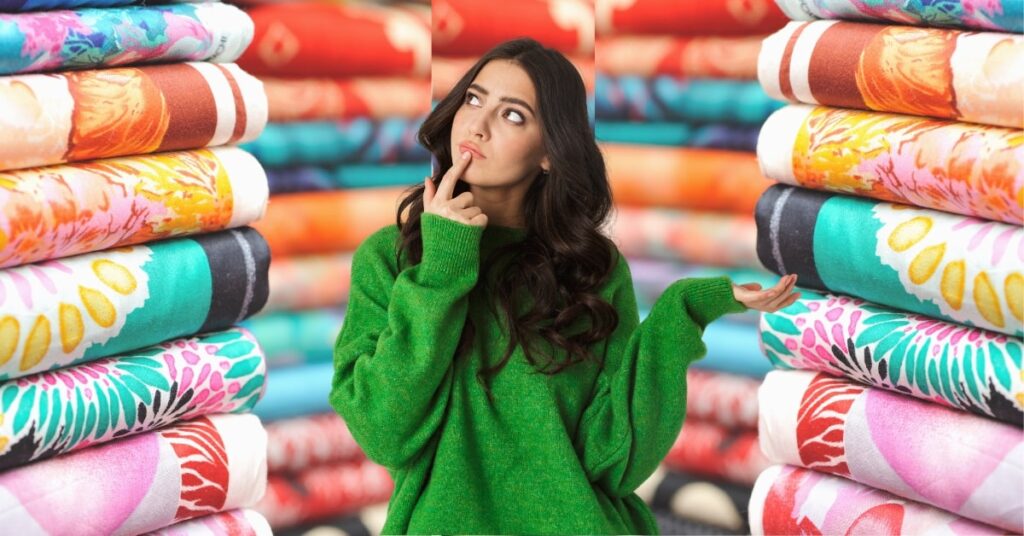In the fashion industry, fabric is the cornerstone of creation. The right fabric not only enhances a design but also determines its functionality, quality, and market appeal. For brands, designers, and manufacturers, buying fabric in bulk is a strategic decision that can make or break profitability, sustainability, and production efficiency. However, bulk fabric procurement is a complex process requiring meticulous planning and industry knowledge. This article provides a comprehensive, step-by-step guide to mastering the art of bulk fabric buying in fashion, ensuring your investment is smart, sustainable, and scalable.
Understanding the Importance of Bulk Fabric Procurement
Buying fabric in bulk offers undeniable benefits:
- Cost Efficiency: Bulk orders often come with discounts, reducing per-unit costs.
- Consistency: Ensures uniformity across your product line, a critical factor in branding.
- Time Savings: Minimizes frequent reordering, allowing you to focus on design and production.
However, it also comes with risks such as overstocking, quality inconsistency, or compatibility issues. Strategic decision-making is key to maximizing the benefits while mitigating potential pitfalls.
Define Your Needs: Purpose, Quality, and Quantity
Before approaching suppliers, clarity is paramount. Ask yourself:
a. What’s the Purpose of the Fabric?
- Is it for ready-to-wear, haute couture, or athletic apparel?
- Does it need to be breathable, stretchable, or water-resistant?
The intended use determines the type, weight, and functionality of the fabric.
b. What Quality Standards Are Required?
- Identify whether you need premium-grade materials for luxury products or cost-effective fabrics for mass production.
- Consider certifications like OEKO-TEX for safety and GOTS for organic textiles.
c. How Much Do You Need?
- Calculate your fabric requirements based on production volume and potential reorders.
- Account for waste, sampling, and potential defects.
Researching and Vetting Suppliers
The supplier you choose can significantly influence the success of your procurement strategy. Here’s how to find the right partner:
a. Global vs. Local Suppliers
- Local Suppliers: Offer faster delivery times and better communication but may have limited variety.
- Global Suppliers: Provide broader options and competitive pricing but may involve longer lead times and higher shipping costs.
b. Assessing Supplier Credibility
- Look for suppliers with a proven track record in your niche.
- Request samples, reviews, and references from other clients.
c. Sustainability and Ethical Practices
- Partner with suppliers committed to ethical labor practices and sustainable production.
- Verify their compliance with environmental and social standards.
The Fabric Buying Process
a. Request Samples
Before committing to a bulk order, request fabric swatches or yardage samples. Evaluate them for:
- Texture and Feel: Does it align with your design vision?
- Durability: Test for pilling, tearing, and washing performance.
- Color Consistency: Verify whether dye lots match your branding requirements.
b. Negotiate Minimum Order Quantities (MOQs)
Suppliers often set MOQs for bulk purchases. Ensure their requirements align with your production needs, especially for small or emerging brands.
c. Price Negotiations
- Leverage competitive bids from multiple suppliers to negotiate the best rates.
- Explore options like early payment discounts or long-term contracts for cost savings.
Quality Assurance and Consistency
Maintaining quality is essential for preserving your brand’s reputation.
a. Conduct Pre-Production Tests
- Test fabric for shrinkage, colorfastness, and tensile strength.
- Simulate end-use scenarios to ensure durability and functionality.
b. Implement Quality Control Checks
- Inspect bulk shipments for consistency in texture, weight, and color.
- Address quality discrepancies immediately with your supplier.
Logistics and Storage
a. Shipping Considerations
- Choose shipping methods that balance cost and speed.
- Account for customs duties, taxes, and potential delays if sourcing internationally.
b. Storage Solutions
- Ensure proper warehouse conditions to prevent damage from moisture, pests, or sunlight.
- Use inventory management software to track stock levels and plan reorders efficiently.
Embracing Sustainability in Fabric Procurement
Sustainability is no longer optional—it’s a necessity in modern fashion. When buying fabric in bulk, consider these strategies:
a. Prioritize Sustainable Materials
- Opt for organic cotton, recycled polyester, or biodegradable fabrics.
- Verify claims with certifications like GRS (Global Recycled Standard).
b. Minimize Waste
- Collaborate with suppliers to purchase fabric rolls that minimize offcuts.
- Explore upcycling options for leftover material.
c. Invest in Traceability
Use blockchain technology or traceability platforms to ensure ethical sourcing and production transparency.
Common Pitfalls to Avoid
a. Overordering
Excess inventory ties up capital and risks obsolescence if trends shift.
b. Ignoring Lead Times
Delays in fabric delivery can derail production schedules and impact launches.
c. Compromising on Quality for Cost
Low-quality fabric can lead to customer dissatisfaction and tarnished brand reputation.
Case Studies of Strategic Bulk Fabric Procurement
a. Patagonia: Pioneering Sustainable Sourcing
Patagonia’s commitment to sustainable materials like organic cotton and recycled polyester has strengthened its brand loyalty and environmental impact.
b. Zara: Mastering Inventory Efficiency
Zara’s fast-fashion model relies on precision in bulk fabric purchasing, allowing it to adapt to trends without overstocking.
Future Trends in Fabric Procurement
a. Smart Textiles
The rise of wearable technology is increasing demand for fabrics with embedded sensors and conductive fibers.
b. On-Demand Manufacturing
Advances in digital printing and localized production are shifting procurement toward smaller, on-demand batches.
c. Circular Economy Integration
More brands are embracing closed-loop systems, repurposing fabrics to reduce environmental impact.
Final Thoughts: The Art of Smart Fabric Procurement
Buying fabric in bulk is a nuanced process that requires balancing creativity, strategy, and sustainability. A thoughtful approach ensures you not only meet production demands but also align with your brand’s values and market expectations. By defining your needs, partnering with the right suppliers, and prioritizing quality and sustainability, you can elevate your fashion business while leaving a positive mark on the industry.
The fabric you choose is more than a material—it’s the foundation of your brand’s story. Make it count.



